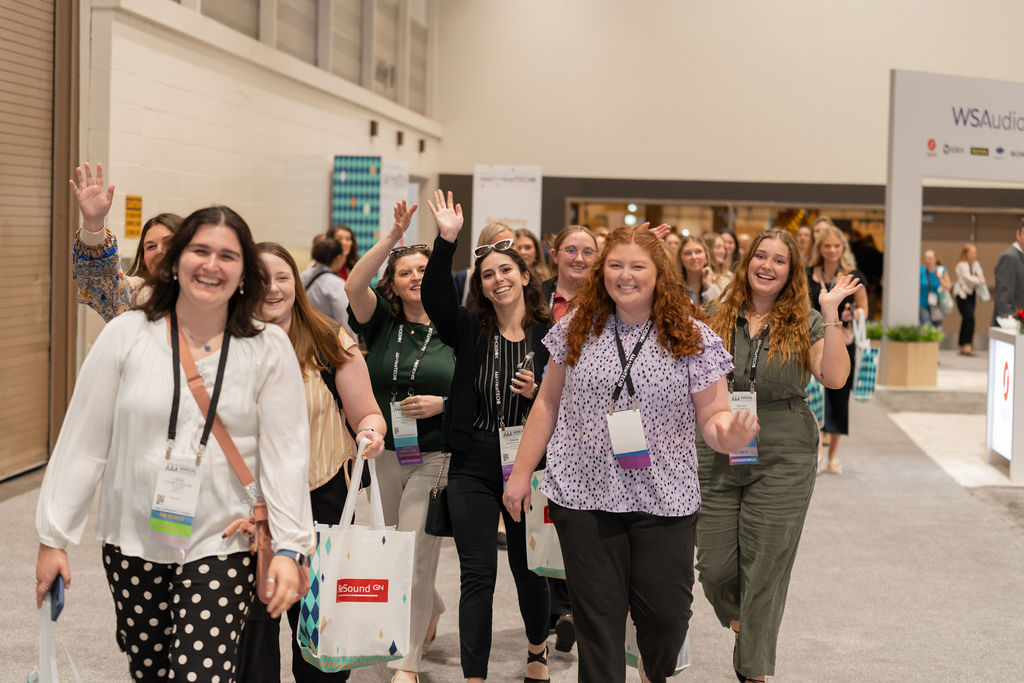As we head into the holiday season, many of us will attend remembrance celebrations of the year’s transpiration, and resolutions for the year to come. Civilizations around the world have been celebrating the new year for at least four millennia, but not always in December. Learn more about the history of New Year’s Eve (NYE).
Although this year’s gatherings may be a bit smaller than usual, common NYE traditions include attending parties, making resolutions, toasting with champagne, singing “Auld Lang Syne,” and enjoying food. The pop of the champagne cork, toasting to the new year, singing songs, catching up with friends, and making resolutions result in a less than accommodating listening environment known as the “cocktail-party” effect. The cocktail-party effect refers to the ability to focus one’s attention a particular stimulus while filtering out a range of other stimuli (i.e., noise). But, how is the brain able to do this, and can everyone do this?
Behavioral research on the cocktail-party effect dates back to the 1950s and continues to be studied today by researchers in audiology, engineering, computer science, neuroscience, and psychology (Cherry, 1953).
Reiss and colleagues (2017; 2021) suggests that, while listeners with normal-hearing sensitively may benefit from the cocktail-party effect, listeners with hearing loss may be unable to filter out extraneous stimuli due to abnormal fusion of speech sounds.
In a recent study, Reiss and Molis (2021) used dichotic vowel stimuli varying in fundamental frequency to explore the presence of speech fusion (i.e., blending of stimuli between the two ears) in groups of listeners with normal hearing or hearing loss. Most participants across both groups reported hearing only one vowel (i.e., fused the vowels) when the dichotic stimuli did not differ in fundamental frequency. When vowel fundamental frequency increased between ears, listeners with normal-hearing sensitivity indicated the presence of two vowels, while listeners with hearing loss continued report only one vowel. The authors conclude that this spectral blending between ears may degrade speech recognition in noisy cocktail-parting settings with competing talkers.
These findings highlight our role in helping our patients manage these challenging listening situations by teaching and encouraging them to use effective communication strategies, noise management technologies, and remote-microphone systems to improve their speech recognition in noise.
Stay “tuned” for more in the new year!
Explore more on hearing and balance issues through our consumer-friendly page.
References
Cherry EC. (1953) Some experiments on the recognition of speech, with one and with two ears. J Acous Soc Am 25:975–979.
Reiss LAJ, Molis MR. (2021) An alternative explanation for difficulties with speech in background talkers: Abnormal fusion of vowels across fundamental frequency and ears. J Assoc Res Otolaryngol 22(4):443-461. doi: 10.1007/s10162-021-00790-7. Epub 2021 Apr 20. Erratum in: J Assoc Res Otolaryngol. 2021 Jul 16;: PMID: 33877470; PMCID: PMC8329143
Reiss LA, Shayman CS, Walker EP, et al. (2017) Binaural pitch fusion: Comparison of normal-hearing and hearing-impaired listeners. J Acoust Soc Am 141(3):1909. doi: 10.1121/1.4978009. PMID: 28372056; PMCID: PMC5848869.
Recent Posts
Your Professional Growth Starts Here
Ready to level up your career? You told us professional and leadership growth matters—especially for those newer to the field and eager to build their…
Termination of Federal EHDI Grants
Earlier this week, the Academy learned that seven federal cooperative agreements funded by the U.S. Health Resources and Services Administration (HRSA) are being terminated. Despite…
Discover What’s New (and Worth the Trip) at AAA 2026
We’re gearing up for an unforgettable convention, and we’re excited to share what’s new in San Antonio! This year’s convention brings fresh programming, expanded learning…


